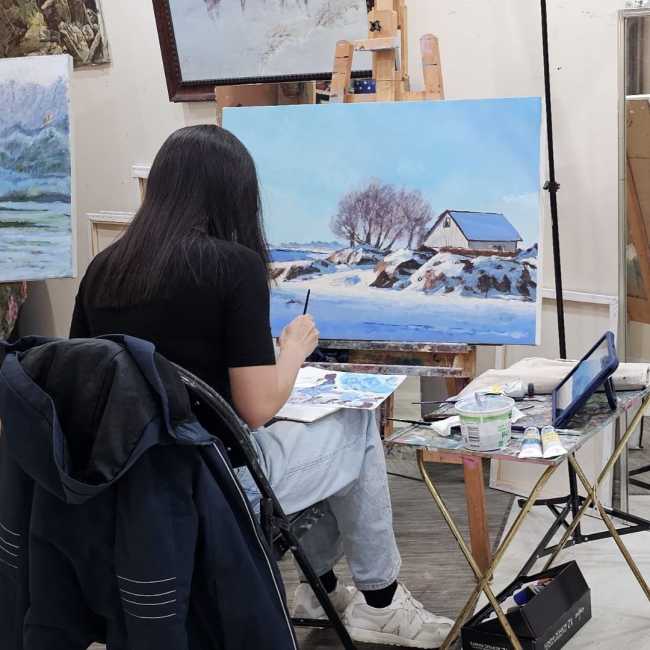Phone: (647) 894 7706

Those who are new to oil painting must learn a lot of different techniques, as well as some different styles of paint mixing. Any reputable oil painting classes will help you master these techniques. In this blog, VR School of Art, a reputed art school in Toronto, explores some major painting mixing methods.
When mixing paints in your oil painting lessons, keep in mind to use more light colours and limited dark colours. The logic is that darker colours easily add tint to an oil painting, so a limited amount is sufficient. So when mixing light and dark hues, use the dark ones sparingly and mix them in gradually.
If you are dabbling in a lot of paint in your oil painting classes, be sure to use a palette knife for mixing instead of a brush. This is because mixing a lot of paint with the brush can cause premature wear and tear. Using a palette knife bypasses this.
Another rule of paint mixing is to stick to combining only two or three colours. This is apart from the whites of course. The rationale behind this is that using too many colours creates a rather muddled, dull mixture that can sap the life out of your artwork.
Oil paintings do not go well with water as a medium. This is the fundamental difference between them and their water-soluble counterparts, such as acrylic paint. However, oil and acrylic paints can be applied to the same canvas, as long as they are applied in different layers and with enough time for each layer to dry.
What does fat over lean mean? Oil paints are fatter; therefore, they have to be applied over leaner layers such as acrylic paints, as the latter is water-soluble. This is mainly due to the drying times of the two paints. Oil paints take longer to dry off due to their constituents.
Want more tips on oil painting? Enroll in one of our oil painting classes at VR School of Art. As one of the most reputed art schools in Toronto, we also offer drawing classes for kids, landscape painting and a lot of different courses. Contact us at 647-894-7706 for more details.